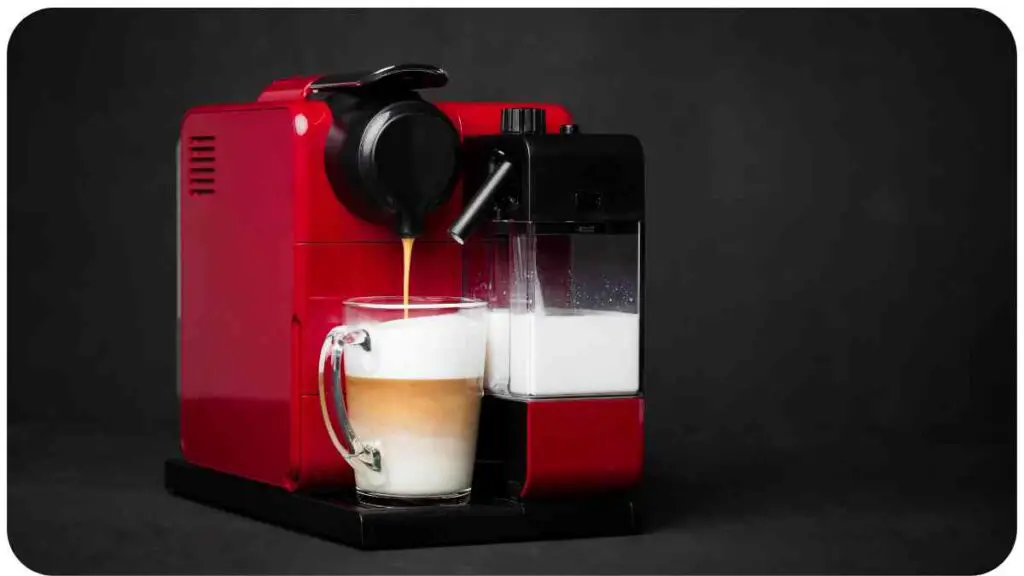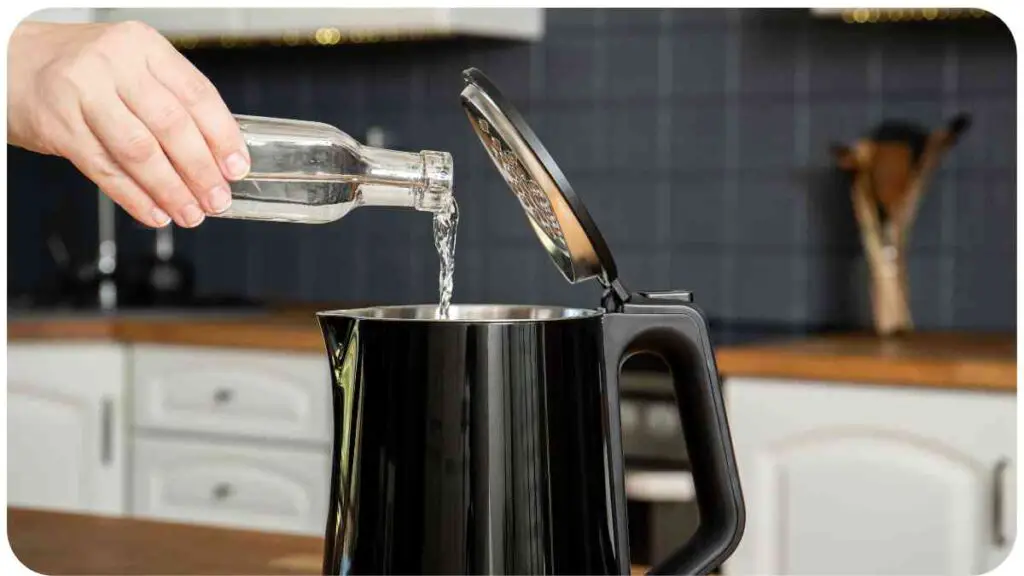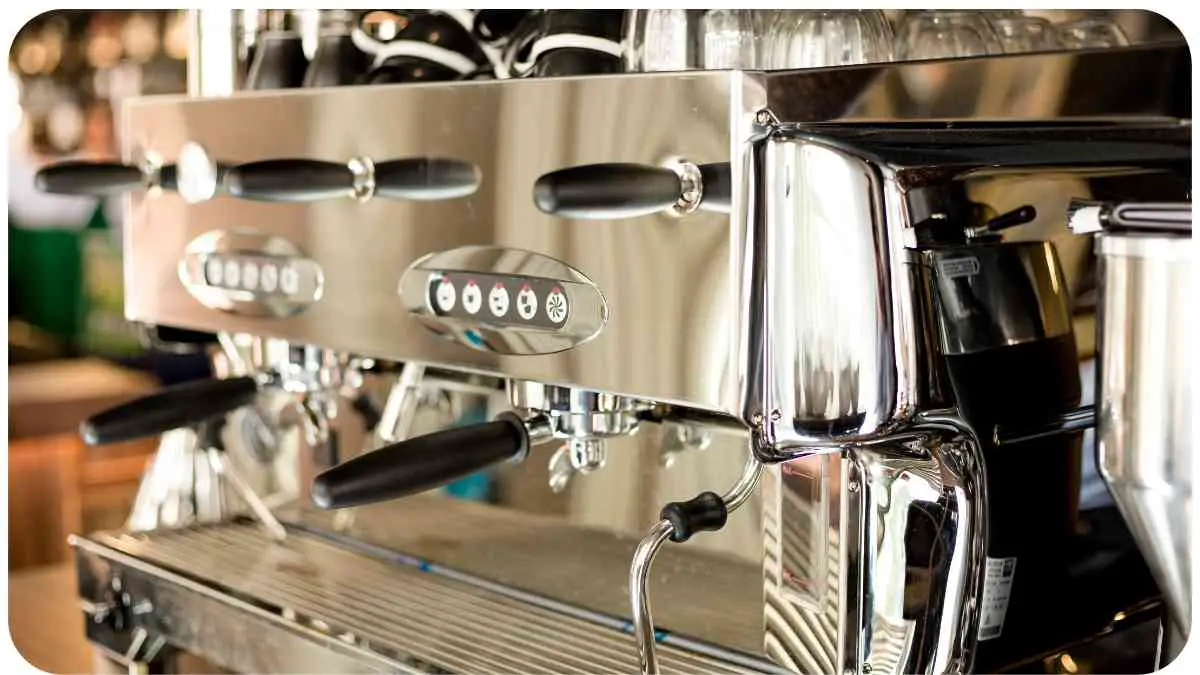Picture this: the sun rising on a lazy weekend morning, and you’re ready to indulge in a perfect cup of coffee brewed by your trusty Krups coffee machine. But wait, is that a hint of bitterness tainting your favorite blend? Before you give up on your beloved machine or compromise the taste of your coffee, consider the possibility that it might be time for a good descaling.
In this comprehensive guide, I’ll take you through every step of the descaling process, drawing from my years of experience as a coffee enthusiast and professional. So, grab your favorite mug, and let’s dive in!
| Takeaways |
| Regular descaling is essential to maintain your Krups coffee machine’s performance. |
| Limescale buildup can lead to clogged pipes, inefficient heating, and altered coffee taste. |
| Follow the manufacturer’s guidelines for descaling, using appropriate solutions. |
| Avoid using vinegar and opt for descaling solutions designed for coffee machines. |
| Prevent future buildup by using filtered or distilled water and regular cleaning. |
| If issues persist, consider professional servicing for a thorough machine check. |
| Mind the environmental impact and choose eco-friendly descaling solutions when possible. |
Why Descaling Is Crucial for Your Coffee Machine
Imagine the inner workings of your coffee machine as a delicate ecosystem. Over time, mineral deposits from water, also known as limescale, start building up, just like a layer of dust settling on forgotten shelves. This buildup isn’t just an eyesore; it can significantly affect the machine’s performance. Limescale can clog pipes, reduce heating efficiency, and even alter the taste of your coffee. To maintain the pristine taste and functionality of your Krups coffee machine, descaling becomes non-negotiable.
Sustainable coffee farming practices are crucial for the industry’s future. By choosing environmentally friendly methods, we contribute to the well-being of our planet and the quality of our coffee.
Table: Effects of Limescale Buildup
| Issue | Consequence |
| Clogged Pipes | Reduced water flow, longer brew times |
| Inefficient Heating | Increased energy consumption, lukewarm coffee |
| Altered Coffee Flavor | Bitter taste, diminished aroma |
In the next section, we’ll explore how to recognize when your coffee machine is crying out for descaling.
Signs Your Krups Coffee Machine Needs Descaling

You know your coffee machine better than anyone else. So, when it starts acting out of character, it’s time to pay attention. Here are some telltale signs that your Krups coffee machine might be due for a descaling session:
Extended Brew Time: Is your coffee taking longer to brew than usual? This could be due to limescale restricting the water flow.
Lukewarm Coffee: If your coffee isn’t as piping hot as it used to be, limescale buildup might be interfering with the heating element.
Unpleasant Taste: If your coffee suddenly tastes a bit off or bitter, it’s likely that limescale is affecting the extraction process.
Reduced Water Dispensing: Is your machine being stingy with the water? Limescale could be obstructing the water pathways.
Remember, prevention is key. Regular descaling can help avoid these issues altogether and ensure your coffee experience remains top-notch.
The Science Behind Limescale Buildup

Let’s demystify the science behind limescale formation. The water you use to brew your coffee isn’t just H2O; it contains minerals like calcium and magnesium. When water heats up, these minerals can separate from the liquid and form solid deposits – that’s limescale. Over time, these deposits accumulate in your coffee machine, causing the problems we discussed earlier. It’s like cholesterol clogging arteries, but in this case, it’s clogging your coffee maker’s arteries.
Make a positive impact on the environment and your health by switching to organic coffee. This choice not only enhances the flavor of your cup but also supports sustainable and ethical coffee production.
Table: Limescale Formation Process
| Step | Description |
| 1. Heating Water | Water temperature rises, causing minerals to separate and solidify |
| 2. Limescale Buildup | Solid mineral deposits adhere to surfaces within the machine |
| 3. Performance Impact | Reduced water flow, inefficient heating, altered coffee flavor |
In the next section, we’ll roll up our sleeves and get into the nitty-gritty of descaling.
Gather Your Supplies
Before embarking on your descaling journey, gather the necessary supplies. Here’s what you’ll need:
Descaling Solution: Opt for a descaling solution specifically designed for coffee machines. This ensures effective descaling without causing harm.
Water: You’ll need clean, cold water for the descaling process.
Container: Prepare a container large enough to hold the water tank’s capacity.
Microfiber Cloth: For wiping down external surfaces.
Timer: Keep track of the descaling steps accurately.
Table: Essential Supplies for Descaling
| Supplies | Purpose |
| Descaling Solution | Dissolves limescale deposits effectively |
| Water | Mixing with descaling solution, rinsing |
| Container | Holding descaling solution and water |
| Microfiber Cloth | Cleaning external surfaces after descaling |
| Timer | Accurate timing of descaling steps |
Now that we’re equipped, let’s dive into the step-by-step guide for descaling your Krups coffee machine.
Step-by-Step Guide to Descaling
Breathe new life into your coffee machine with this comprehensive descaling process. Follow these steps to ensure a thorough and effective descaling session.
1. Preparing the Solution
Begin by preparing the descaling solution as per the manufacturer’s instructions. Typically, you’ll need to mix the solution with water in the container you’ve set aside. This powerful concoction is going to break down those stubborn limescale deposits.
Transforming your coffee shop into an eco-friendly haven is simpler than you think. Implementing sustainable practices not only attracts environmentally conscious customers but also contributes to a greener and more responsible coffee industry.
2. Emptying and Cleaning the Water Tank
Before you start descaling, ensure that the water tank is empty. If your machine has a water filter, remove it. Give the water tank a thorough rinse to get rid of any coffee residue.
3. Running the Descaling Solution
Place a container under the coffee machine’s spout to catch the descaling solution. Depending on your machine, you might need to initiate the descaling cycle. This step might take a bit, so use the time to plan your next brew – a reward for your machine’s spa day.
4. Rinsing the Coffee Machine Thoroughly
Once the descaling cycle is complete, run a couple of cycles with clean water to rinse out any remaining solution. This is crucial to avoid any lingering taste of the descaling solution in your next cup of coffee.
Uncover the hidden truths of the coffee industry and its impact on communities. Understanding the dark side empowers consumers to make informed choices, promoting fair and ethical coffee consumption.
Frequency of Descaling
Like any routine maintenance, the frequency of descaling depends on how often you use your coffee machine and the hardness of your water. As a rule of thumb, aim to descale every 3 to 6 months. If your water is particularly hard, you might need to do it more often. Keep an eye out for the signs we discussed earlier, and you’ll know when it’s time.
Importance of Using the Right Descaling Solution
Choosing the right descaling solution is paramount. While some DIY blogs might suggest vinegar, it’s best to stick with solutions specifically formulated for coffee machines. These solutions are designed to be effective without being overly aggressive, ensuring your machine stays in tip-top shape.
Avoiding Common Mistakes During Descaling
Descaling might seem straightforward, but there are a few pitfalls you should steer clear of to ensure a successful descaling session.
Elevate your coffee experience by supporting the best sustainable coffee brands. These brands prioritize quality, ethical sourcing, and environmental responsibility, ensuring a delicious cup that aligns with your values.
1. Not Following Manufacturer’s Guidelines
Every coffee machine is unique, and its manufacturer knows it best. Make sure to read and follow the specific descaling instructions provided in your machine’s manual. This ensures you don’t accidentally damage any sensitive components.
2. Using Vinegar Improperly
While vinegar might be a common household solution, it’s not the best choice for descaling coffee machines. Its strong acidity can damage certain parts of the machine over time. Stick to descaling solutions recommended by the manufacturer.
3. Neglecting Regular Cleaning
Descaling is just one part of coffee machine maintenance. Regularly clean the removable parts, like the drip tray and coffee grounds container, to prevent the buildup of coffee oils and residues.
4. Rushing the Process
Descaling requires time. Don’t rush through the steps. Follow the recommended duration for each descaling cycle to ensure the solution has enough time to work its magic.
Remember, the goal is to extend your coffee machine’s lifespan and maintain the quality of your brews. Taking shortcuts can lead to more trouble down the line.
Extending Your Coffee Machine’s Lifespan
Think of your coffee machine as a trusty steed. With the right care, it can serve you for years to come. Regular descaling is one of the keys to a long and healthy life for your coffee machine. Alongside descaling, clean and dry your machine after each use, and store it in a dry place to prevent moisture-related issues.
Troubleshooting: Dealing with Persistent Limescale
In some cases, limescale might persist even after descaling. If you’re still facing issues, you might need to repeat the descaling process or consult the manufacturer’s customer support. Remember, your machine’s health is worth the effort.
Maintenance Tips to Prevent Future Buildup
Prevention is always better than cure. To minimize future limescale buildup, consider using filtered or distilled water. These types of water have lower mineral content, reducing the chances of limescale forming in the first place. Additionally, keep an eye on water hardness in your area – if it’s high, you might need to descale more often.
Table: Water Types and Impact on Limescale
| Water Type | Limescale Buildup Risk |
| Tap Water | Moderate to High |
| Filtered Water | Low to Moderate |
| Distilled Water | Very Low |
Professional Servicing vs. DIY Descaling
While DIY descaling is effective and economical, there might come a time when your coffee machine needs professional attention. If you notice persistent issues despite regular descaling, it’s a good idea to have a professional technician take a look. They have the expertise and specialized tools to diagnose and address more complex problems.
Environmental Impact of Descaling Agents
It’s important to be mindful of the environmental impact of descaling agents. Some commercial descaling solutions might contain chemicals that can harm the environment. Whenever possible, choose descaling solutions that are eco-friendly and biodegradable. This small choice can make a positive impact on our planet.
Conclusion
And there you have it, your essential guide to descaling your Krups coffee machine. By now, you’re equipped with the knowledge and steps needed to keep your coffee machine performing at its best.
Remember, descaling isn’t just a chore; it’s an investment in the quality and longevity of your coffee experience. So, the next time you savor that perfectly brewed cup of joe, you’ll know that it’s not just the beans doing the magic, it’s the care you’ve put into your machine.
Happy brewing, fellow coffee enthusiast! May your mornings be filled with the rich aroma and smooth taste of well-deserved coffee bliss.
Thank you for joining me in this journey through descaling expertise, personal anecdotes, and practical tips. Until next time, keep those cups full and your coffee machines even fuller.
Further Reading
For more insights and detailed information on descaling your Krups coffee machine, check out the following resources:
- How to Clean a Krups Coffee Machine: Easy Steps: This guide offers easy-to-follow steps for cleaning your Krups coffee machine effectively, ensuring it stays in top condition.
- Official Krups UK – Coffee Machines Maintenance: Dive into Krups’ official resources for coffee machine maintenance. They provide comprehensive guidelines to keep your machine running smoothly.
- How to Descale Your Krups Coffeemaker: This article explains the descaling process for your Krups coffeemaker, ensuring you maintain the best possible coffee quality.
FAQs
Q: How often should I descale my Krups coffee machine? A: The frequency of descaling depends on water hardness and usage. On average, descale every 3 to 6 months.
Q: Can I use vinegar for descaling my coffee machine? A: It’s best to use descaling solutions formulated for coffee machines to avoid damaging sensitive components.
Q: What’s the impact of limescale buildup on coffee flavor? A: Limescale can alter coffee flavor, making it taste bitter or unpleasant due to improper extraction.
Q: How do I know if my coffee machine needs descaling? A: Signs include longer brew times, lukewarm coffee, and altered taste. These indicate limescale buildup affecting performance.
Q: Is professional servicing necessary for descaling? A: While DIY descaling is effective, professional servicing might be needed if issues persist despite regular descaling.
Remember, these resources and FAQs provide valuable information to complement the guide you’ve just read. They’ll help you become a descaling expert and ensure your coffee machine continues to brew delicious cups for years to come.

Hi, I’m Hellen James, founder of Unified Coffees. I created the platform to fill the gap in coffee blogging by providing tips on brewing coffee, rather than just focusing on beans and grinders.


